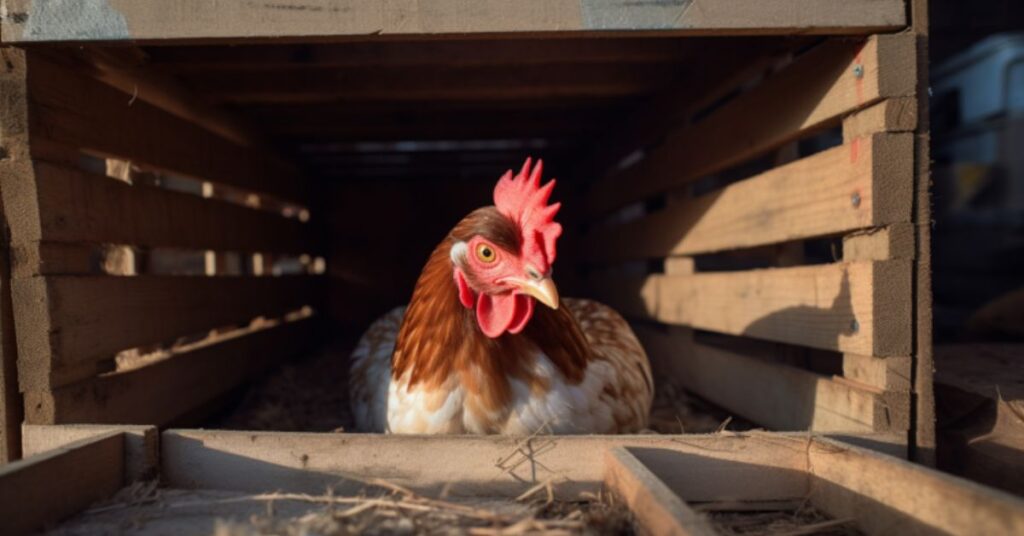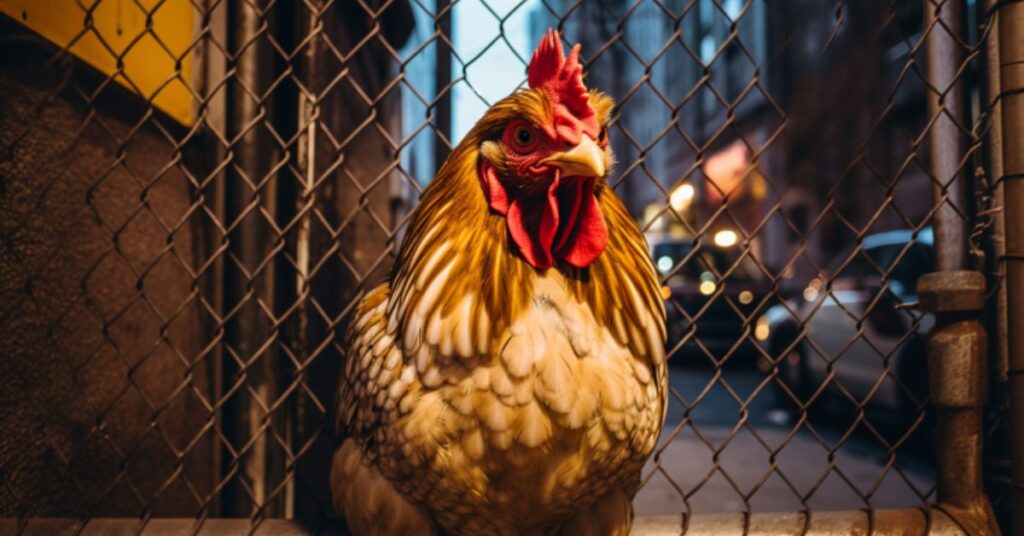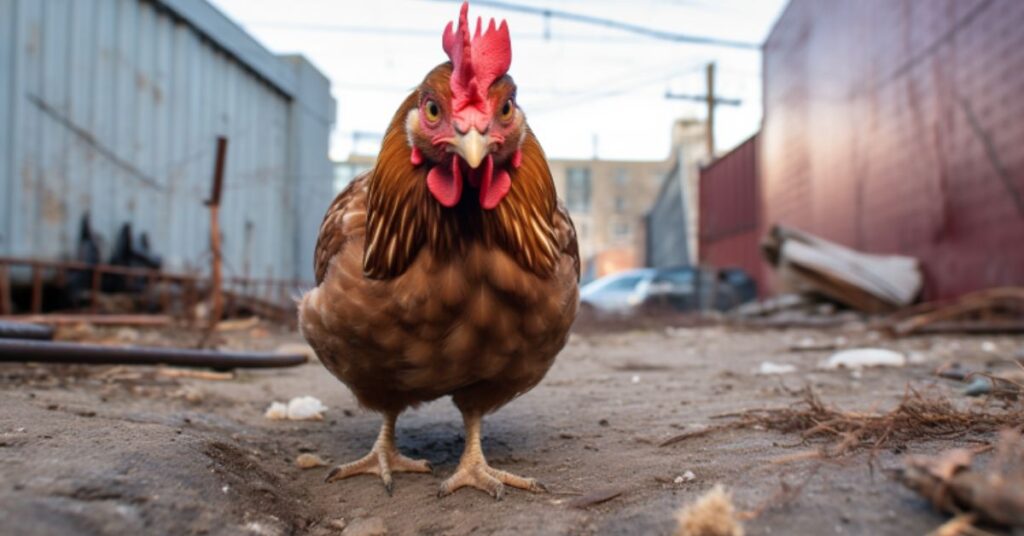Raising backyard chickens for a steady supply of fresh eggs is becoming increasingly popular. While the average hen lays around 200 eggs per year, some exceptional breeds can produce up to 300 eggs annually. This significantly boosts your homegrown egg production.
But with so many chicken breeds to choose from, how do you pick the top performers that will deliver the highest number of eggs?
In this comprehensive guide, we’ll cover everything you need to know about chickens that lay 300 eggs a year, including:
- The benefits of choosing 300-egg laying breeds
- Factors that influence egg production
- Profiles of the top 7 chicken breeds that can lay 300+ eggs annually
- Tips for getting peak egg production from your flock
- Answers to common questions about 300-egg layers
Why Choose Chickens that Lay 300 Eggs Per Year?
Most standard chicken breeds lay anywhere from 150-280 eggs per year, with 200 being average. So why go for super-productive 300-egg layers? Here are some of the key advantages:
1. Increased egg production from fewer hens
With 300-egg breeds, you can get the same total egg output from a smaller flock. For example, 4-5 hens that each lay 300 eggs could produce the same 1,200-1,500 eggs annually as 6-10 average 200-egg layers. Less feed, housing, and care required.
2. Reliable year-round supply of eggs
Many breeds experience decreased egg production in winter. But 300-egg layers continue churning out eggs consistently, no matter the season. You’ll enjoy winter eggs when they are most scarce and expensive in stores.
3. Quicker return on investment
Because they start laying eggs at a younger age, 300-egg breeds begin producing sooner. You’ll break even and start profiting faster compared to less efficient layers.
4. Valuable for commercial operations
Poultry farms choose these breeds to maximize productivity. Their excellent feed-to-egg conversion ratios make them economical for large-scale egg production.
5. Can extend egg-laying peak period
While the highest egg production happens in the first 2-3 years, excellent care and nutrition can prolong peak laying for 300-egg breeds to 5 years or longer. Making them a sound long-term investment.
In short, chickens able to lay 300 eggs annually or more are the top performers that can take your homestead egg production to the next level.
What Factors Influence Egg Production Rates?
While heritage and breed influence egg-laying capacity, several other factors impact just how many eggs your chickens produce in reality:
Feed Quality and Nutrition
A balanced diet rich in protein, calcium, and nutrients promotes higher egg production. Quality feed makes all the difference.
Bird’s Age and Health
Egg production declines as chickens get older. Preventing disease through good sanitation and care helps hens lay maximally.
Daylight Hours
Increasing daylight triggers hormonal changes that boost laying. Providing 14-16 hours of light daily, even artificially, encourages more egg production.
Stress Levels
Stress from predators, overcrowding, temperature extremes, or poor handling reduces laying. Prevent stress to keep hens happier and more productive.
Individual Traits
Like any living being, each chicken has slightly different capabilities. Even among the same breed, some hens lay more due to unique traits.
Seasons
Egg production drops in late fall and winter due to decreased daylight and hormone changes. Supplementing light helps counter this.
So breed matters, but environmental and management factors also play a big role. When these variables are all optimized, 300-egg chicken breeds can reach their full genetic potential.
7 Chicken Breeds That Can Lay 300+ Eggs Per Year
Here are in-depth profiles of the top 7 most prolific egg layers – chickens that can produce 300 or more eggs annually under ideal conditions:
1. White Leghorn
- Annual Egg Production: 280-320 eggs
- Eggshell Color: White
- Country of Origin: Italy
- Size: 5-7 lbs
- Cold Hardy: No
- Temperament: Active, Flighty
- Dual Purpose: No
The Leghorn is the classic white egg layer. They are lightweight birds that convert feed efficiently into eggs, making them a popular commercial breed. Each hen can lay 280-320 creamy white eggs per year on average. Low maintenance and undemanding of space, they do well in confinement.
However, their high-strung temperament makes them less suited for families with kids. Leghorns are not great foragers due to their large single combs being prone to frostbites. They do poorly in very cold climates unless properly sheltered.

2. Australorp
- Annual Egg Production: 250-300 eggs
- Eggshell Color: Light brown
- Country of Origin: Australia
- Size: 6-8 lbs
- Cold Hardy: Yes
- Temperament: Docile, Calm
- Dual Purpose: Yes
Originally from Australia, the Australorp holds the world record for egg laying at 364 eggs in 365 days! They are one of only a handful of chicken breeds developed outside North America and Europe. Each Australorp hen can produce 250-300 light brown eggs per year.
They have a sweet, docile personality and do well in all climates. Their large size also makes them a good meat bird. Overall, the Australorp is an excellent all-around heritage chicken breed.

3. Isa Brown
- Annual Egg Production: 250-300 eggs
- Eggshell Color: Brown
- Country of Origin: France
- Size: 5.5 lbs
- Cold Hardy: Average
- Temperament: Avoidant
- Dual Purpose: No
The Isa Brown is a hybrid breed specifically for commercial egg production. They are not only efficient layers but also produce large to extra-large brown eggs. Each Isa Brown hen can lay 250-300 eggs annually on average. They are relativity small chickens that adapt well to confinement and warmer climates.
However, their somewhat flighty temperament makes them less suitable for families with kids. The Isa Brown has a high feed-to-egg conversion ratio, making them popular for profitable large-scale egg farming.

4. Black Star
- Annual Egg Production: 250-300 eggs
- Eggshell Color: Brown
- Country of Origin: United Kingdom
- Size: 5 lbs
- Cold Hardy: Average
- Temperament: Docile, Calm
- Dual Purpose: No
Developed in the UK, the Black Star chicken results from crossing Rhode Island Reds, Barred Rocks, and New Hampshire hens. They are exceptional layers of large brown eggs, producing 250-300 per year.
Weighing around 5lbs, Black Stars are docile, calm chickens that do well in confinement. They lack broodiness and continue laying through winter.
However, the Black Star’s productivity declines after 2-3 years of peak laying. They tolerate a range of climates and integrate well with most flock members.

5. Golden Comet
- Annual Egg Production: 250-300 eggs
- Eggshell Color: Brown
- Country of Origin: United States
- Size: 4.5-5.5 lbs
- Cold Hardy: Yes
- Temperament: Docile, Friendly
- Dual Purpose: No
The Golden Comet is a hardy hybrid chicken able to produce 250-300 large brown eggs annually. They are smaller birds weighing only 4.5-5.5 lbs and well suited for confinement and high-density coops.
Golden Comets are intelligent, docile chickens that adapt well to a variety of environments. They start laying early at around 16-20 weeks of age.
Golden Comets have excellent feed-to-egg conversion efficiency. However, their productivity declines after 2-3 years of peak laying.

6. California White
- Annual Egg Production: 250-300 eggs
- Eggshell Color: White
- Country of Origin: United States
- Size: 4-5.5 lbs
- Cold Hardy: Yes
- Temperament: Active, Flighty
- Dual Purpose: No
Developed in California, the California White chicken is a cross between the California Gray and White Leghorn. They are superb white egg layers, producing 250-300 per year. Weighing only 4-5.5 lbs, the California White thrives in confinement and is suitable for both small and large poultry operations. Their petite size and hardiness also make them a good choice for urban and backyard flocks. However, California Whites tend to be nervous and flighty. They are not well-suited for families with kids.

7. Rhode Island Red
- Annual Egg Production: 200-300 eggs
- Eggshell Color: Brown
- Country of Origin: United States
- Size: 6.5 lbs
- Cold Hardy: Yes
- Temperament: Curious, Active
- Dual Purpose: Yes
The Rhode Island Red is an all-American heritage breed known for hardiness and egg production. They are active foragers and persistent layers averaging 200-300 large brown eggs annually.
Their rich chocolate brown feathers are also stunning. Weighing in at 6.5lbs, the Rhode Island Red fattens well for meat production. They have an inquisitive nature and adapt to most environments.
However, they are also prone to aggression and bossiness at times. Their large single comb is susceptible to frostbite in very cold climates.

Tips for Getting 300 Eggs Per Year From Your Flock
The breeds above have the genetic potential to produce 300 eggs annually. But reaching this level consistently requires optimizing their diet, housing, and care. Here are some tips:
- Give at least 1.5-2 sq. feet of coop space per hen – Overcrowding causes stress, injuries, and reduced laying.
- Provide 14-16 hours of light per day – Extend daylight using artificial lighting to maximize laying months.
- Feed a high quality 16-20% protein layer feed – Ensure their diet has enough protein and calcium for egg production.
- Provide clean nest boxes and collect eggs frequently – Laying boxes should be safe, relaxing places to encourage laying.
- Give 1+ inch of roost space per hen – Overcrowded roosts disrupt sleep and decrease egg production.
- Ventilate the coop while preventing drafts – Good airflow reduces respiratory illness while too much draft stresses chickens.
- Keep bedding clean and dry – Damp bedding breeds diseases and parasites that reduce egg laying.
- Give hens access to outdoor space – Fresh air and greens support health to sustain high production.
- Control pests and predators – Frequent threats trigger stress, limiting laying capacity.
- Separate aggressive hens – Victimized hens produce less due to anxiety and injury.
With the right breed choice along with proper feed, housing, light, and care, your backyard hens can achieve their full egg-laying potential of 300 per year!
Frequently Asked Questions About Chickens That Lay 300 Eggs Annually
Here are answers to some common questions about keeping breeds that produce 300 eggs per year:
Are 300-egg chicken breeds difficult to raise?
Most 300-egg layers are no more challenging to keep than moderate egg producers. They have similar care needs. Focus on giving them enough space, nutrition and protection from elements and predators. Some 300 layers like Leghorns can be flighty or high-strung. Go for calmer breeds like Australorps and Orpingtons if that’s a concern.
Do 300-egg layers have more health issues?
No, there is no evidence that heavy egg production leads to more health problems. 300-egg birds are simply more efficient at converting feed into eggs. They are bred to sustain that level of production. Give them a balanced diet with enough calcium, protein, and nutrients to support their egg laying demands.
Should I add lights to boost winter laying?
Yes, artificial light stimulates laying by mimicking longer summer days. Extending their daylight to 14 hours or more encourages most 300-egg breeds to maintain higher egg production year-round.
How much space do 300-egg layers need?
Aim for at least 2-4 square feet of coop space plus 8-10 square feet of outdoor run space per standard-sized hen. For lightweight breeds like Leghorns, you can go slightly lower. Remember to factor in roost and nest box space too. Overcrowding inhibits maximum egg production.
Do 300-egg breeds stop laying as quickly as others?
Peak production declines after 2-3 years in most breeds. But in 300-egg layers, you can extend high productivity to 5 years or more with excellent care, feeding, cleanliness, lighting, and predator protection. The better you optimize their environment, the longer they will sustain prime laying capacity.
Getting 300 eggs a year takes the right breed and management. But the benefits of enhanced egg production and the satisfaction of thriving backyard hens makes it well worth the effort!
Conclusion
Backyard chicken keepers looking to ramp up their egg harvesting should consider breeds that can lay 300 eggs annually or more. The top performers like Leghorns, Rhode Island Reds, Australorps, and Golden Comets can help you collect more eggs using fewer hens. Who doesn’t want an efficient and steady supply of fresh eggs from their flock?
Just be sure to give your 300-egg layers the proper feed, housing, light, space, and care their bodies need to perform at full capacity. When you maximize their comfort and minimize stress, these laying superstars will reward you handsomely.
If you already keep one of these breeds, share your experience in the comments below! And don’t forget to bookmark this guide for whenever you need a handy reference on the top chickens that lay 300 eggs per year.
